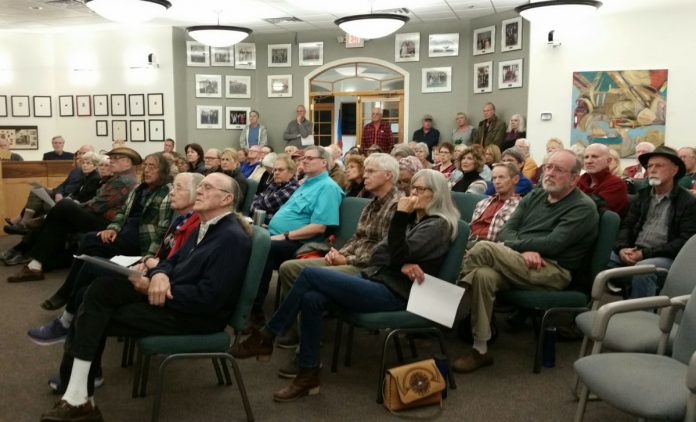It’s back to the drawing board — somewhat.
After two hours of discussion and public input, the Sedona Planning and Zoning Commission was not comfortable with what was presented to it regarding a staff-initiated request for a minor text amendment to the Sedona Community Plan changing the major amendment criteria.
The commissioners took no action as the matter will come back before the commission at a later date if staff chooses to proceed with the proposed changes.
“This public hearing is not about Serenade Apartments,” Commission Chairwoman Kathy Levin said to the audience. “That project came through earlier in the year and it was pulled by the developer. And that was because staff couldn’t support it and the neighborhood couldn’t support it. This public hearing isn’t about any other apartment project in your neighborhood or across the city.”
According to a city report, a major amendment to the general plan is defined by state statute as “a substantial alteration of the municipality’s land use mixture or balance as established in the municipality’s existing general plan land use element.”
The statute allows cities and towns to define the criteria if proposed amendments to their general plans are substantial alterations and therefore a “major amendment.” Per state statute, major amendments must be considered once a year and require a two-thirds approval by the town or city council.
Sedona staff was recommending that an increase in residential density regardless of parcel size and some other land use changes of five acres and under be considered as minor amendments because:
-The current major amendment review process may discourage applications that should at least be given consideration.
-The major amendment criteria are unnecessarily restrictive. Sedona city staff believes that providing less restrictive major amendment criteria is more consistent with most other Arizona cities and towns.
-Since housing diversity and affordability is a major goal of the Community Plan, minor amendment consideration should be sufficient for proposed residential density changes.
All amendments to the Sedona Community Plan not defined as “major” are considered “minor” amendments.
A minor amendment can be considered at any time of the year and does not require citywide notification or a two-thirds vote by council.
However, staff did recommend that minor amendments be required to receive a two-thirds council vote, which the commissioners expressed approval for.
Sedona requires a citywide mailing notification for major amendments. Senior Planner Mike Raber said staff is not aware of any other Arizona city or town that implements a city-wide mailing notification, which can cost close to $5,000. He added that changing the threshold for what constitutes a major amendment would affect the requirement for a citywide mailing.
All the commissioners, except Eric Brandt, had concerns regarding the five-acre designation and lack of a citywide mailing notification.
A large crowd turned out for the meeting and those who spoke expressed concern that this change would somehow circumvent the public process.
Raber said that’s not the case and that normal steps would be taken when a project comes before the city: Multiple public meetings, and approval by the Planning and Zoning Commission and Sedona City Council.
Some also were not happy with the idea of not receiving citywide notification. And like those on the commission, others felt the five-acre threshold was too large.
In regard to how staff came to settle on the five-acre threshold, staff reviewed the acreages of the past 15 major amendment applications. Eight of these were under five acres and seven were over five acres. Based on this, Raber said staff also believes that a five-acre threshold should be considered for some other proposed land use changes. This is still restrictive in comparison with other cities and towns, he said.
Since 2001, there have been some changes to Sedona’s major amendment criteria. However, staff looked at land use related major amendment criteria for 21 other Arizona cities and towns and believes that Sedona’s criteria is one of the most, if not the most, restrictive.
“The once per year timeframe and very high citywide noticing costs can discourage potential applicants from seeking to amend the Plan,” Raber wrote in his report. “For residential projects that may require higher densities to create more affordable housing options, it may be an unnecessary hurdle when rezoning and development review approvals are still required. Minor amendments require the same level of staff review and must be approved through public hearings with the planning and zoning commission and city council, but can occur throughout any given year.”






















